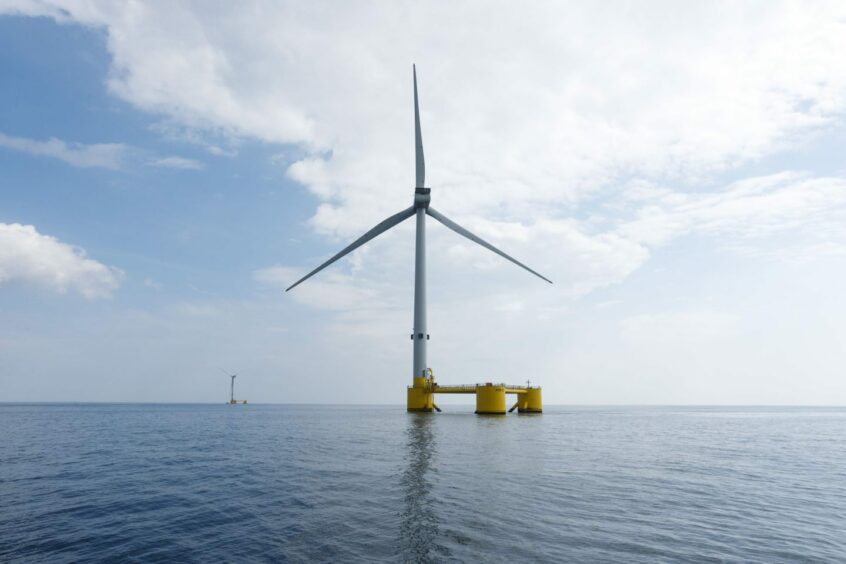
A report by RenewableUK has found that the global floating offshore wind pipeline has seen a 32% increase over the last 12 months.
The news comes as Renewable UK kick off its Floating Offshore Wind conference in Aberdeen.
RenewableUK outlined that the UK is currently the second-highest producer of floating offshore wind and that the power source will represent over half of the UK’s offshore wind generation by 2050.
This will generate around £43.6 billion in economic value and create more than 29,000 jobs, says the industry body.
The group found that capacity has grown from 185 gigawatts a year ago to 244GW in 2023 and the number of projects has gone up from 230 to 285 in the same timeframe.
The pipeline includes projects at any stage: fully operational, under construction, approved, in the planning system awaiting a decision or at an early stage of development.
Global Floating wind rankings
Currently, there are 227 megawatts of floating wind are fully operational across 14 projects in 7 countries.
Norway has the most with three projects generating 94MW.
The UK falls just behind Norway with 80MW being generated by two projects, Portugal has 25MW coming from one project and China is fourth with 19MW across three projects.
RenewableUK’s chief executive and co-chair of the Floating Wind Taskforce, Dan McGrail, said: “This report shows that although the UK is a world leader in floating wind, other countries are eyeing the massive economic opportunity offered by this innovative technology and are determined to get a slice of the action.
“The international competition for investment is intensifying rapidly.”
‘We urgently need a step-change from our partners in Government’
The report shows that demand for floating foundations is expected to ramp up with the potential for 472 in the UK by the end of 2032.
RenewableUK also forecasts a potential for 1,369 floating foundations in Europe and 1,924 for projects globally by the end of the same year.
RenewableUK believes that the Government’s target of reaching 5GW of floating wind in UK waters by 2030 remains achievable, but the next CfD auction and future rounds must be underpinned by sustainable parameters in order to maximise deployment, drive down costs and incentivise investment in domestic supply chains.
This year’s CfD round proved difficult for offshore wind as not a single bid was received regarding work for the green technology.
Mr McGrails added: “We urgently need a step-change from our partners in Government to ensure that this cutting-edge industry can attract billions in investment to boost deployment and build up new supply chains, rather than focussing solely on a race to the bottom on prices.
“To ensure that the UK seizes the industrial benefits of developing state-of-the-art technology and revitalising ports around the country, we need to see sustainable prices to enable stepping-stone projects to go ahead in a successful auction next year, and every year going forward.
“Leveraging these projects will enable us to replicate the cost reductions we’ve seen in fixed-foundation offshore wind, as well as catalysing supply chain development. We’re determined to make the 2020s a decade of acceleration for floating wind”.
Recommended for you
